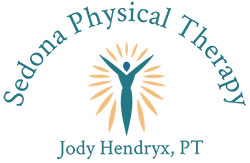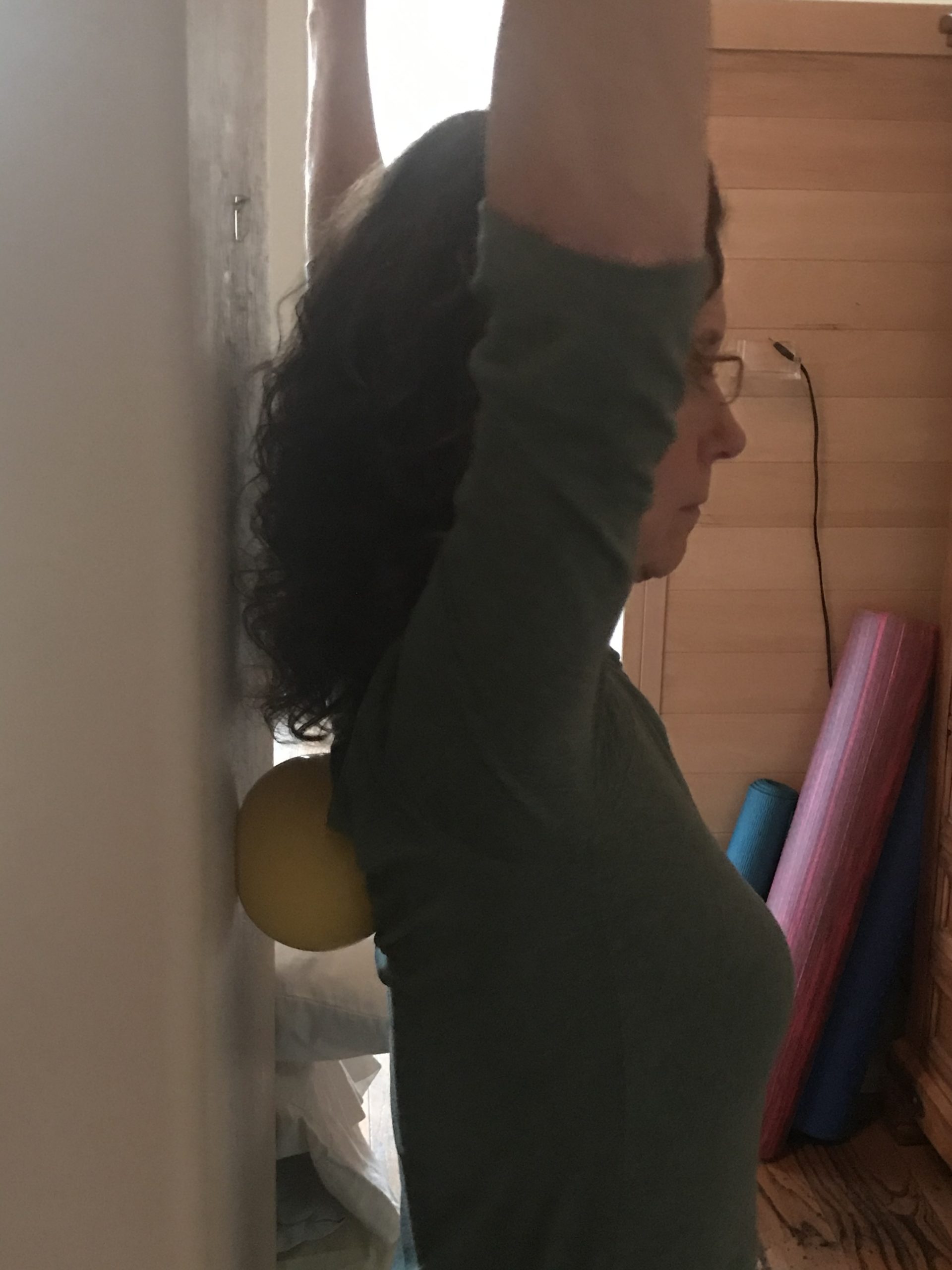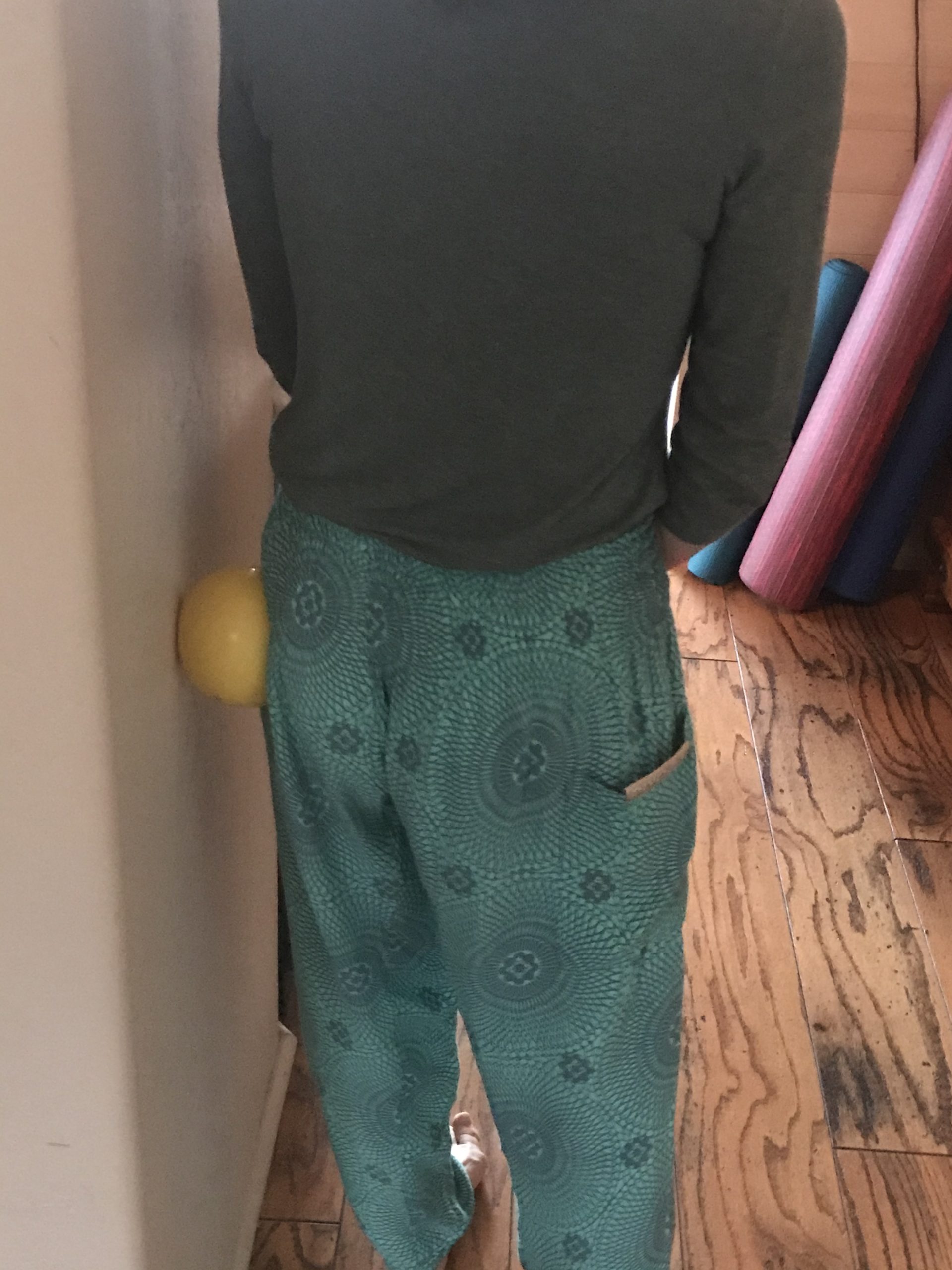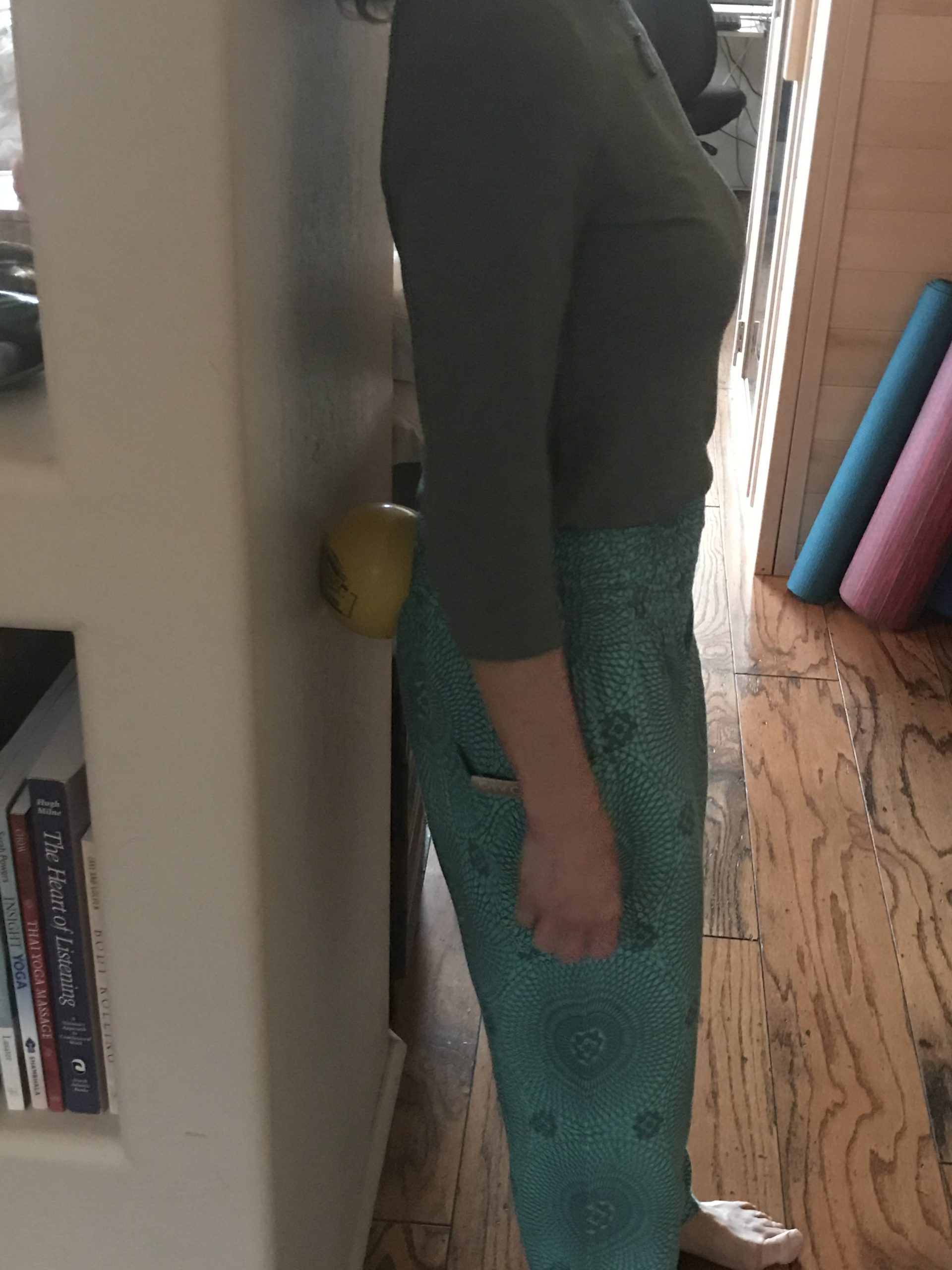This is a really important self care tip because of it’s widespread effects for eliminating myofascial pain almost anywhere in the body. It’s especially effective for relieving low back pain when used in the abdominal region. We have two hip flexor muscles called the iliopsoas or psoas for short. They tend to get tight because most of us sit too much which will often be the cause of low back pain. The psoas muscles attach directly to the lumbar vertebrae in the back and come through the abdominal area to attach to the front of the hip. Our main blood flow also comes down the front of the body, splits at the level of the naval and goes down each side of the pelvis to the legs. Tension in this area, which is common, will decrease blood flow going to this very important area, also a cause of low back pain.
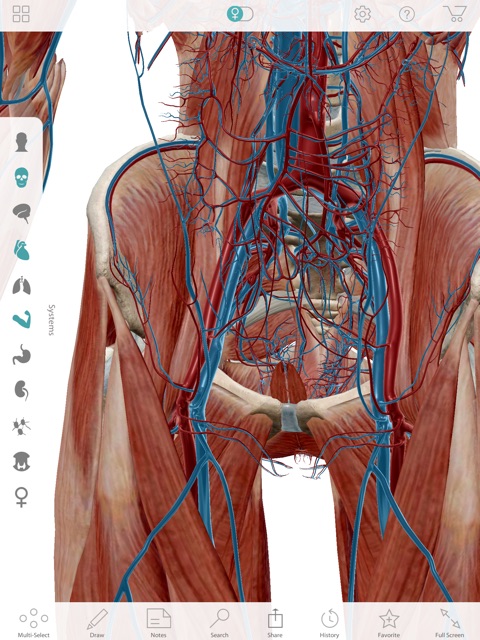
This shows the front of the pelvis with the psoas muscles and our circulatory system
I’ve created a video to show the easiest way to use the ball to release tension in the abdominal region and eliminate low back pain.
What is the technique:
We use a 4” air filled ball for this technique. The ball is placed anywhere from the bottom of the ribcage to the top of the pubic bone. What I generally tell people is- pick a spot, any spot from the bottom of the ribcage to the top of the pubic bone. You have to lie face down on the ball- either on the floor (most ideal), or a bed if the floor is just too hard. I generally rest my forehead on my hands in front of my head vs having my head turned to the side. You can also roll up a towel and make it into a horseshoe shape to rest your face in.
For folks who are unable to lie on their stomach, there are some options. You can lay your ball on a table or counter that is waist height and lean over it. Another option is to put the ball against a wall and lean into it.
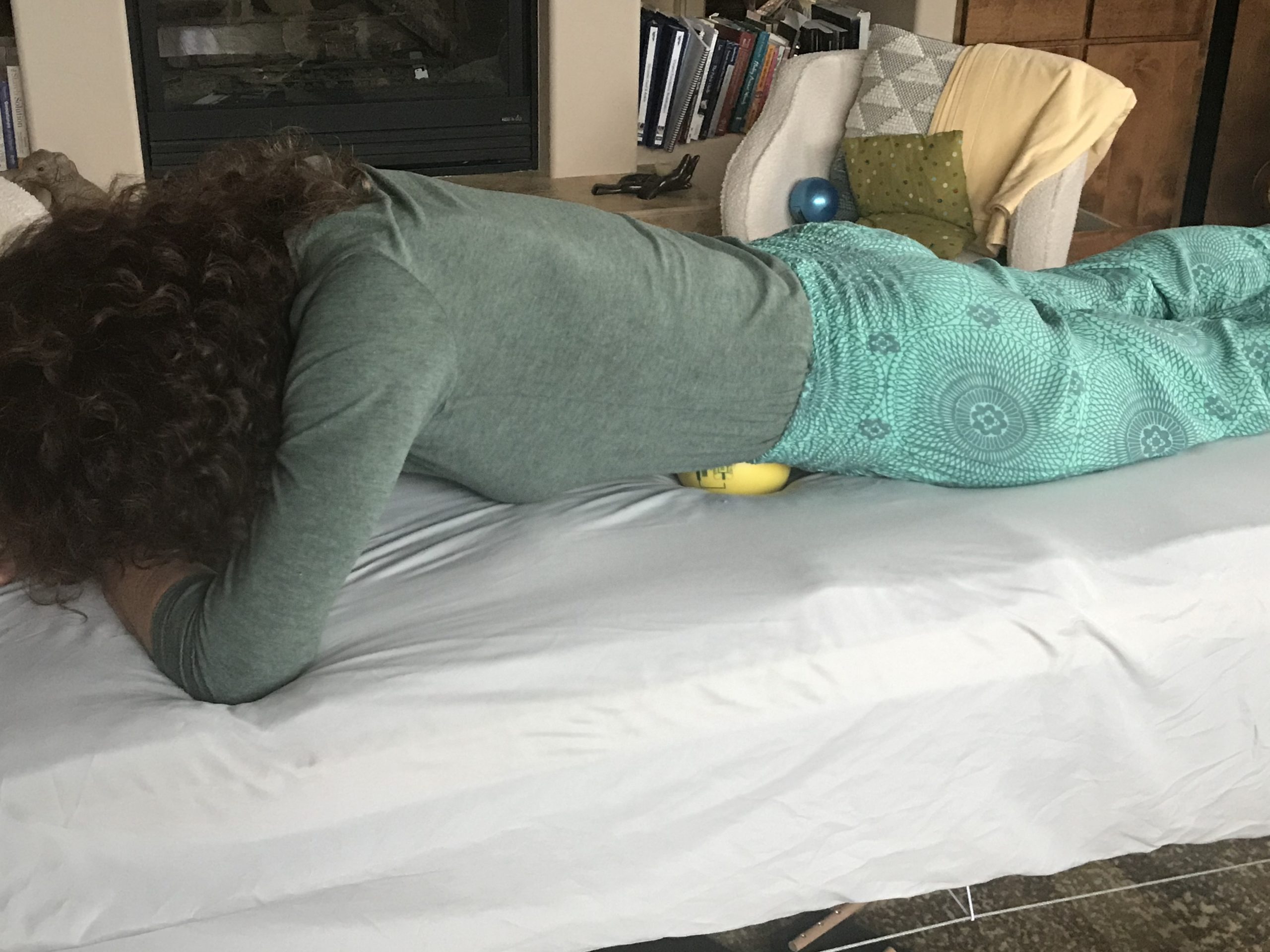
A small air filled balled can be used to eliminate pain in the low back.
What will you feel?
You are looking for anything that feels hard or tender. This is a “do no harm” technique so the pressure should be enough that you feel the engagement of the fascia but not so hard that you can’t relax over it. Stay in the spot that you picked for at least five minutes but there is no maximum. In other words, you can stay as long as you want. You can choose to do multiple spots ( as long as you are holding them at least 5 minutes), or just do one spot for a longer period. You may feel tension at the area where the ball is or it may be radiating to a distant spot. It’s not uncommon to feel things away from the area where you have the ball. It’s also not uncommon to feel throbbing or something that feels like your blood pulsing. Again, as long as you can relax and breathe over the ball, t’s ok.
What should you do?
For the most part, absolutely nothing. You do want to be present and feel so you shouldn’t have your attention diverted listening to TV, reading a book, engaging with family members. You should have your attention on what you are feeling. You should be focusing on your breath and directing your breath to any area that you feel holding tension.
What are the expected outcomes of this exercise?
Wow, so many…..much more then just the direct effect of lengthening the psoas muscles, which is a major cause of low back pain. It also can have an effect on circulation to the pelvis and lower extremities. The main blood flow comes down the center of the body and splits to both sides of the pelvis and the legs at the level of the belly button (umblicus). Most of us are tight in this area as it’s our center of gravity so a lot of pressure is focused in this area. It’s also the area of emotional holding. Tension in this area is like having a crimp in your garden hose. In other words, tension in this area will limit blood flow which also limits the elimination of toxins and waste products. This effect of increasing blood flow and the elimination of toxins and waste products is generally not felt immediately. This effect increases our overall heath over time. Increasing oxygen to our tissues and increasing the release of waste products increases the overall health of our organs.
One more point that I feel is really important to make…..I often hear from my clients that they are not using the ball because “it hurts too much” or “I just don’t like it”. Two things about that. First of all, it shouldn’t hurt too much because the first rule of thumb is do no harm. That means
that if it hurts, move to a surface that is more allowing or deflate the ball or even use something less then the air filled ball. Use anything you can to allow you to be able to allow some level of connection into this area. So many of us are energetically and emotionally cut off from this area because of emotional or physical trauma. Engaging this area often brings up the “pain” that is living in this area. It’s not uncommon to not want to feel something that is uncomfortable but it is the first step to fully healing. We can’t heal if we don’t feel.
Other uses for the 4” air filled ball:
The small air filled ball is a cheap and easy tool for doing soft tissue mobilization anywhere in the body. Here are some examples:
- * Standing- put the small ball between your shoulder blades to release tension which could affect shoulder, head and neck pain.
- * Standing- facing the wall- put the small ball in the front of your shoulder. Lengthen you arm on the same side away as you move your head in the opposite direction. This can also release tension in the shoulders, head and neck.
- * Standing- find tender spots in the buttocks area. When you find a tender spot, hold that spot until the tension dissipates. This will release muscle tension which could lead to low back pain, piriformis or sciatic pain.
- * Standing- have the ball directly on your sacrum. This can relieve pressure on the sacrum, decompress the low back or even free up a stuck sacroiliac joint.
- * Lying on your back- have your knees bent, feet flat. Lift your buttocks up and place the ball under the sacrum. Slowly lower your weight onto the ball.
An alternative to this technique is to have your lower legs lifted up on a chair. This will placeyour hips and knees at 90 degrees with your legs supported.
Both options will relieve pressure on the sacrum, decompress the low back, decrease lowback pain and free up a stuck sacroiliac joint. - Using a small air filled ball is a cheap and easy way to decrease and even eliminate pain in the body. It’s important for all of us to have self care tools in order to maintain and further progress the muscular and structural changes that happen in our therapy sessions. Myofascial Release is an amazing tool for correcting these pain causing structural imbalances. We also have to remember that the body adapts to these dysfunctional patterns and we need to have active involvement in bringing in new movement patterns to facilitate and promote a long term change. Sedona Physical Therapy with Jody Hendryx, PT in Sedona and Verde Valley Myofascial Release with Robert and Danielle Hendryx, LMT in Cottonwood provide expert level manual therapy treatments along with identifying the cause of the pain.
- Jody Hendryx, PT
